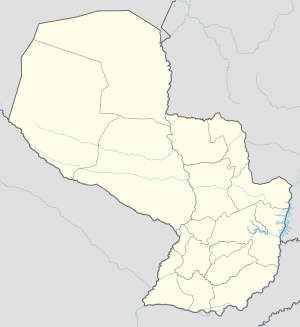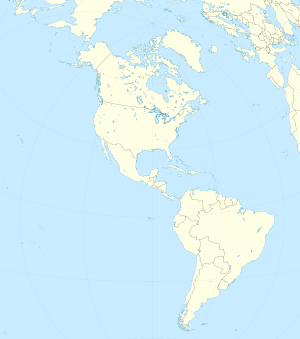306:
278:
545:
245:
37:
203:
165:
193:
184:
153:
133:
120:
493:, commanded the Bolivian assault personally in place. The Bolivian army launched three attacks that stalled after seizing some parts of the stronghold. After this failure, the Bolivian troops attempted to dig a trench around the Nanawa complex to isolate it but were met by Paraguayan reinforcements. Heavy rains forced the Bolivians to abandon what they had captured of the complex and the Paraguayans soon recovered these positions.
313:
285:
252:
496:
The
Bolivian troops did not leave the area after the costly attempt but fortified themselves in a semicircle around the Paraguayan trenches. In July during the dry season the Bolivian army attempted again to capture Nanawa in the
508:, fought seven month later, it was one of the bloodiest battles fought in South America in the 20th century, coming to be labeled as the "South American Verdun" by comparison with the
461:
for "carob tree forest"), established by the
Paraguayans in 1928, was considered the strongest Paraguayan outpost after it was heavily fortified by the end of 1932 under directives of
417:
531:, was inspired by the battle. Fernández, a celebrated poet, was at the time a soldier of the Paraguayan fifth division, and was wounded during the Bolivian assault.
485:, summoned under his command four regiments and several minor units which made up the Paraguayan fifth division. The commander-in-chief of the Bolivian army, German
437:
432:
694:
355:
574:
305:
277:
244:
620:
68:
679:
348:
684:
260:
674:
596:
567:
341:
427:
689:
377:
392:
659:
664:
557:
397:
669:
561:
553:
528:
505:
498:
402:
578:
412:
524:
382:
453:
was fought from 20 to 26 January 1933 between the
Bolivian and Paraguayan armies during the
8:
422:
481:
were built by the garrison around a horseshoe-shaped defence. Nanawa's commander, Col.
482:
169:
509:
478:
407:
473:
former officers who joined the
Paraguayan army in the 1920s. Zig-zag trenches,
470:
458:
653:
635:
622:
462:
83:
70:
36:
486:
474:
466:
490:
157:
62:
454:
365:
28:
202:
164:
138:
192:
183:
152:
125:
516:
333:
651:
566:but its sources remain unclear because it lacks
612:The age of the professional soldier, 1900–2001
312:
284:
251:
349:
356:
342:
597:Learn how and when to remove this message
695:History of Presidente Hayes Department
652:
292:First Battle of Nanawa (South America)
337:
538:
41:Sketch of the first battle of Nanawa
13:
14:
706:
543:
320:First Battle of Nanawa (America)
311:
304:
283:
276:
250:
243:
201:
191:
182:
163:
151:
131:
118:
35:
1:
614:. Robert L. Scheina. Page 97.
363:
16:1933 battle of the Chaco War
7:
10:
711:
680:Battles involving Paraguay
534:
527:and written in Guaraní by
685:Battles involving Bolivia
373:
295:Show map of South America
237:
224:
211:
175:
144:
111:
45:
34:
26:
21:
675:Battles of the Chaco War
552:This article includes a
264:Location within Paraguay
581:more precise citations.
506:second battle of Nanawa
499:Second Battle of Nanawa
610:Latin America's Wars:
451:First Battle of Nanawa
145:Commanders and leaders
22:First Battle of Nanawa
636:23.48750°S 59.76917°W
529:Emiliano R. Fernández
225:Casualties and losses
84:23.48750°S 59.76917°W
641:-23.48750; -59.76917
521:Regimiento 13 Tuyutí
267:Show map of Paraguay
261:class=notpageimage|
89:-23.48750; -59.76917
690:January 1933 events
632: /
525:Ramón Vargas Colman
323:Show map of America
80: /
554:list of references
504:Together with the
103:Paraguayan victory
53:20–26 January 1933
660:Conflicts in 1933
607:
606:
599:
479:machine gun nests
446:
445:
332:
331:
107:
106:
702:
665:1933 in Paraguay
647:
646:
644:
643:
642:
637:
633:
630:
629:
628:
625:
602:
595:
591:
588:
582:
577:this article by
568:inline citations
547:
546:
539:
512:of World War I.
510:Battle of Verdun
428:Cañada Strongest
368:
358:
351:
344:
335:
334:
324:
315:
314:
308:
296:
287:
286:
280:
268:
254:
253:
247:
206:
205:
196:
195:
187:
186:
168:
167:
156:
155:
137:
135:
134:
124:
122:
121:
95:
94:
92:
91:
90:
85:
81:
78:
77:
76:
73:
47:
46:
39:
19:
18:
710:
709:
705:
704:
703:
701:
700:
699:
670:1933 in Bolivia
650:
649:
640:
638:
634:
631:
626:
623:
621:
619:
618:
603:
592:
586:
583:
572:
558:related reading
548:
544:
537:
447:
442:
369:
364:
362:
328:
327:
326:
325:
322:
321:
318:
317:
316:
299:
298:
297:
294:
293:
290:
289:
288:
271:
270:
269:
266:
265:
263:
257:
256:
255:
200:
190:
189:
181:
162:
150:
132:
130:
119:
117:
88:
86:
82:
79:
74:
71:
69:
67:
66:
65:
40:
17:
12:
11:
5:
708:
698:
697:
692:
687:
682:
677:
672:
667:
662:
616:
615:
605:
604:
562:external links
551:
549:
542:
536:
533:
523:, composed by
483:Luis Irrazábal
444:
443:
441:
440:
435:
430:
425:
420:
415:
410:
405:
400:
395:
390:
385:
380:
374:
371:
370:
361:
360:
353:
346:
338:
330:
329:
319:
310:
309:
303:
302:
301:
300:
291:
282:
281:
275:
274:
273:
272:
259:
258:
249:
248:
242:
241:
240:
239:
238:
235:
234:
231:
227:
226:
222:
221:
218:
214:
213:
209:
208:
198:
178:
177:
176:Units involved
173:
172:
170:Luis Irrazábal
160:
147:
146:
142:
141:
128:
114:
113:
109:
108:
105:
104:
101:
97:
96:
61:
59:
55:
54:
51:
43:
42:
32:
31:
24:
23:
15:
9:
6:
4:
3:
2:
707:
696:
693:
691:
688:
686:
683:
681:
678:
676:
673:
671:
668:
666:
663:
661:
658:
657:
655:
648:
645:
613:
609:
608:
601:
598:
590:
587:December 2014
580:
576:
570:
569:
563:
559:
555:
550:
541:
540:
532:
530:
526:
522:
518:
515:A Paraguayan
513:
511:
507:
502:
500:
494:
492:
488:
484:
480:
476:
472:
471:White Russian
468:
464:
463:Ivan Belaieff
460:
456:
452:
439:
436:
434:
431:
429:
426:
424:
421:
419:
416:
414:
411:
409:
406:
404:
401:
399:
396:
394:
391:
389:
386:
384:
381:
379:
376:
375:
372:
367:
359:
354:
352:
347:
345:
340:
339:
336:
307:
279:
262:
246:
236:
232:
229:
228:
223:
219:
216:
215:
210:
204:
199:
194:
185:
180:
179:
174:
171:
166:
161:
159:
154:
149:
148:
143:
140:
129:
127:
116:
115:
110:
102:
99:
98:
93:
64:
60:
57:
56:
52:
49:
48:
44:
38:
33:
30:
25:
20:
617:
611:
593:
584:
573:Please help
565:
520:
514:
503:
495:
450:
448:
418:2nd Alihuatá
413:Campo Grande
398:Campo Jordán
393:1st Alihuatá
387:
230:2,000 killed
207:5th Division
197:9th Division
188:4th Division
112:Belligerents
27:Part of the
639: /
579:introducing
487:World War I
475:barbed wire
467:Nicolas Ern
438:Villamontes
383:Kilómetro 7
87: /
654:Categories
627:59°46′09″W
624:23°29′15″S
491:Hans Kundt
457:. Nanawa (
403:2nd Nanawa
388:1st Nanawa
233:248 killed
158:Hans Kundt
75:59°46′09″W
72:23°29′15″S
63:Gran Chaco
455:Chaco War
433:El Carmen
423:Campo Vía
366:Chaco War
29:Chaco War
489:veteran
378:Boquerón
212:Strength
139:Paraguay
58:Location
575:improve
535:Sources
126:Bolivia
469:, two
408:Gondra
136:
123:
100:Result
560:, or
517:polka
459:Enxet
220:9,000
217:9,000
477:and
465:and
449:The
50:Date
656::
564:,
556:,
519:,
501:.
600:)
594:(
589:)
585:(
571:.
357:e
350:t
343:v
Text is available under the Creative Commons Attribution-ShareAlike License. Additional terms may apply.



